Combat Patrols,
1st Battalion 6th Infantry, US Army Vietnam, 1967 - 71
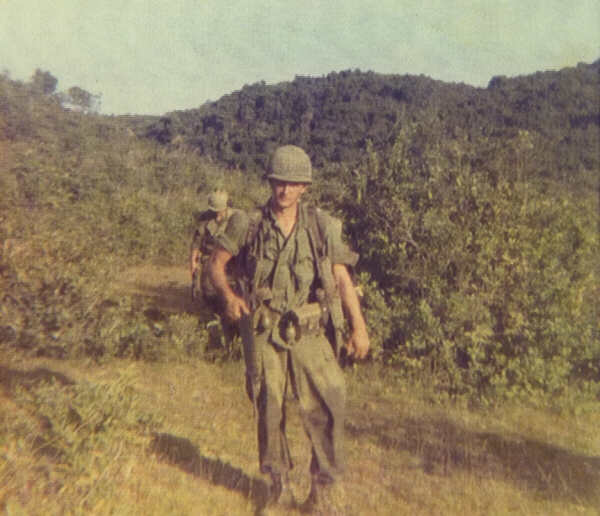
Daylight patrols in the lowlands and foothills were similar in all
the years between 1967 and 1971.
James Larry Kiestler on a daylight combat patrol in the "Rocket Pocket"
area in the foothills NW
of Chu Lai, Vietnam in 1969. Photo provided by Gerald "Whitey"
White, Company A, 1st Bn 6th
Inf, 1969. Link to Whitey's personal
tribute to his friend who was KIA on June 1, 1969.

Daylight patrol by members of Company C, 1st Bn 6th Inf in 1971.
Rick Wade photo.

Here a patrol from C/1-6 Inf takes a break along a village road in
1968. When the units were
operating in the coastal lowlands, their patrols frequently traversed
populated areas. Friend or foe?
Dave Bliss photo.
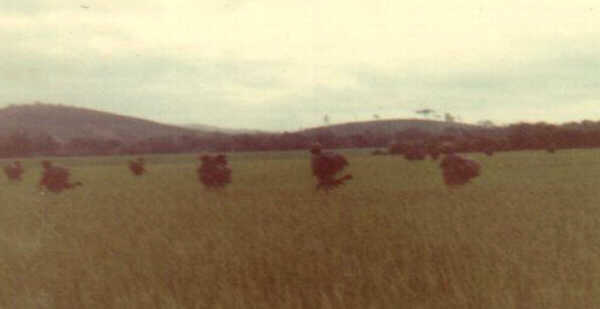
Soldiers from 1st Plt., Co. A, 1st Bn 6th Inf start a night patrol
in 1969. They would move until well
after dark and then select good ambush positions along likely enemy
avenues of travel. Whitey White
photo.
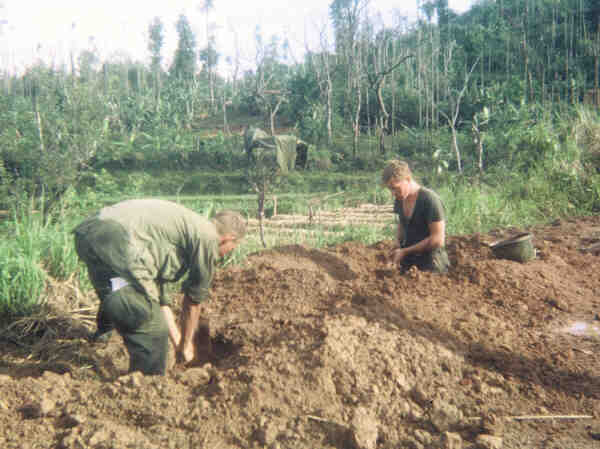
If not on a night patrol when stealth mattered the most, soldiers were
expected to dig in. Digging
provided protection, but it also helped the enemy pinpoint defensive
positions. More than one man
died because he failed to dig deep enough. The rule was--either
select a position after dark that
was easily defensible and gave an advantage over likely enemy approach,
or dig deep. Digging
shallow positions was practically worthless -- they pinpointed your
position and provided little
protection. Shallow positions near trees could be deadly--aerial
bursts from enemy or freindly fire
hitting the trees could cause casualties. Some units required
each man to carry extra sandbags that
could be used and reused on fighting positions. Dave Bliss photo (C/1-6
1967-68)

Soldiers from 1st Plt., Co. A, 1st Bn 6th Inf in a day position in
March 1969. During the dry
season, water wells like the one at left were key terrain features
-- both the Viet Cong and US troops
depended on them for fresh water, and the vegetation provided concealment
and sometimes shade.
One could not relax too much, as an ambush while at the water well
happened more than once.
Whitey White photo.

Before the dry season (July and August) arrived in full force, small
streams provided water. Soldiers
who were too picky about their water source (e.g. tank tracks full
of green ooze --but several
purification tablets made that muck drinkable) sometimes paid the price
as a heat injury casualty.
Dave Bliss photo.
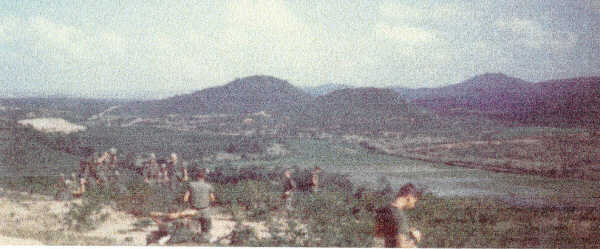
Soldiers from Company C, 1st Bn 6th Inf taking a break from a patrol
in the "Rocket Pocket"
in 1969. Photo from Terry Ivey.

Soldiers from 3rd Platoon, B Co. 1st Bn 6th Inf retun to LZ Fat City
after a patrol in the area of
the "Rocket Pocket" Photo provided by Clint Whitmer (3/B/1-6
Inf 1968-69).

SGT Dennis Linn and another soldier from B Company, 1st Bn 6th Inf,
on a daylight patrol near
Tam Hoi(4) at BS 685 895 east of LZ Dottie in September 1970.
Photo provided by SGT Linn.
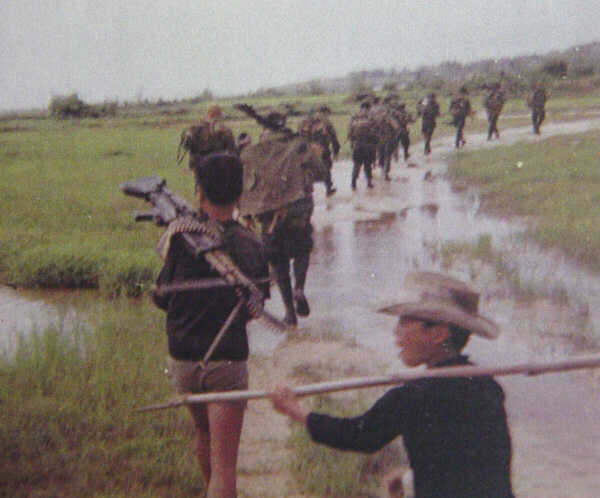
A PF and C/1-6 Inf patrol returns to a pacification village during
the rainy season, fall 1970.

A landmark for patrols from C/1-6 Inf for the area west of Hill 43
in 1970. This is early on in the
three or four day patrol--note the C-rations inside long OD color socks
dangling from the packs.
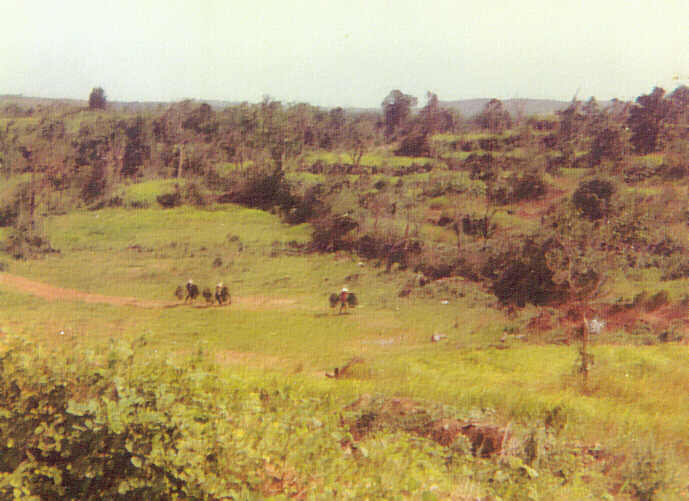
View of a trail adjacent to a Daylight Defensive Position (DDP) in
the tactical area of operations.
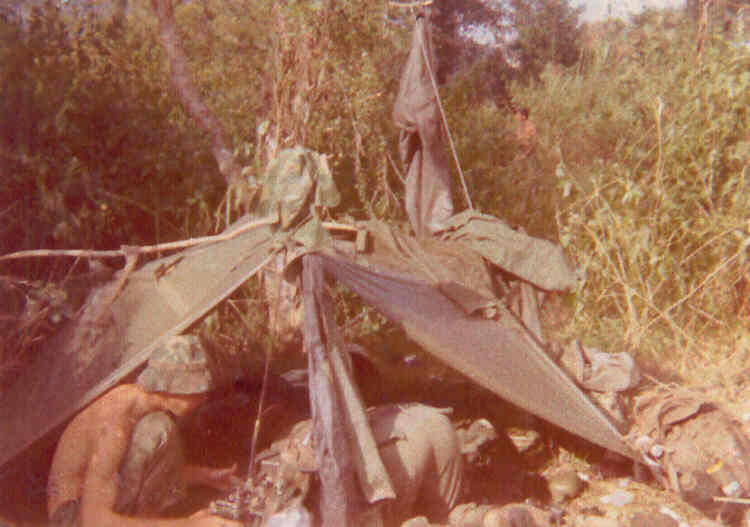
Soldiers from 3/A/1-6 Inf trying to get relief from the heat in a daylight
position in the Rocket
Pocket area northwest of Chu Lai in December, 1969. In the scrub
and hedgerow areas, such
shelters were practically invisible from only a few yards away.
Photo from Wm Collier.
If you recognize any of the soldiers in these photos, please contact
wr9r@aol.com
Select another photo from the photo index at left, or link to the 1st
Bn 6th Inf Home Page